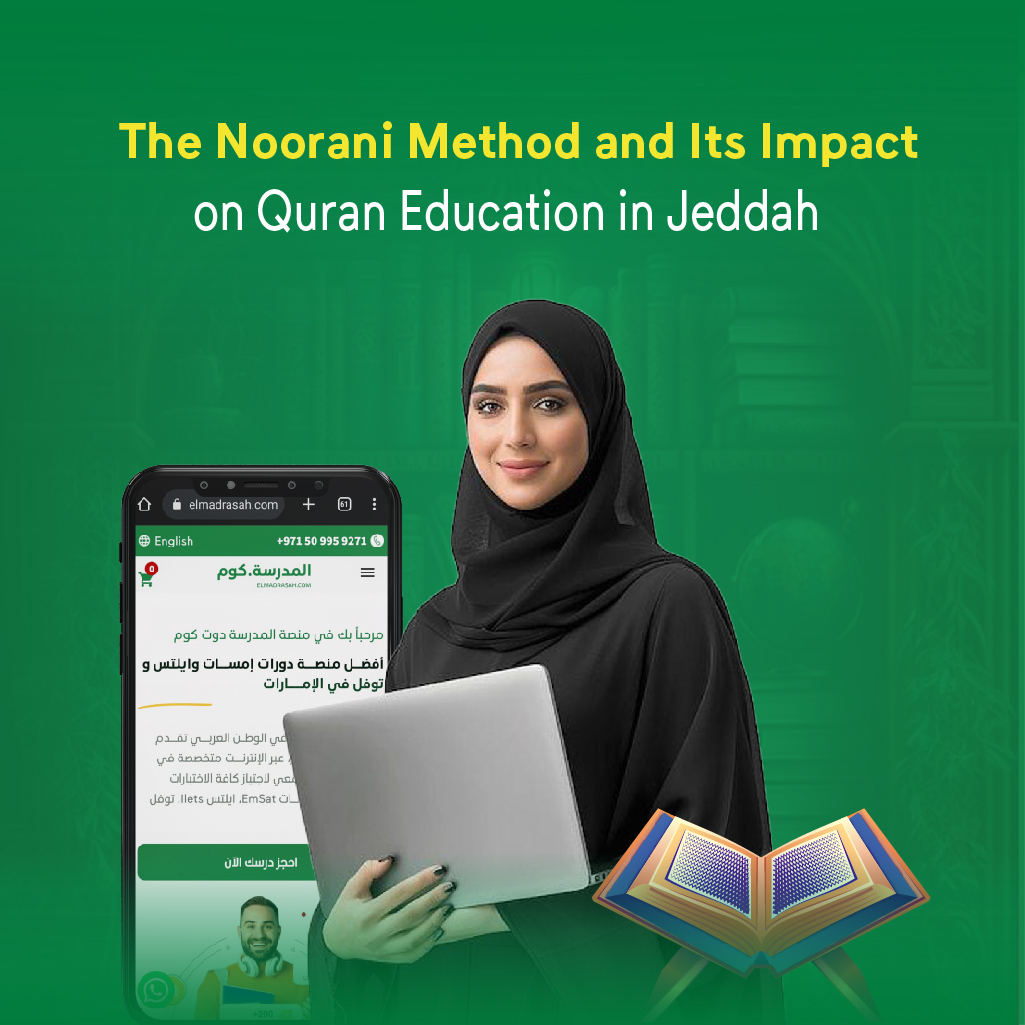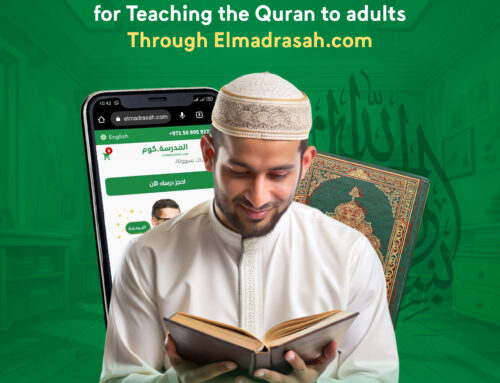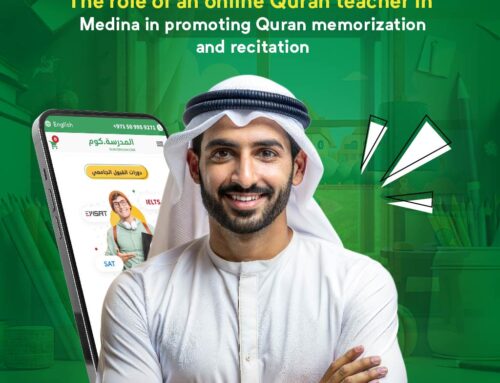
The Noorani methods are considered effective educational techniques for Quran Education in Jeddah. They contribute to improving students’ reading and recitation skills. This article combines the theoretical and practical aspects of these methods, highlighting their positive impact on students’ understanding of the Holy Quran and enhancing their educational experience. By reviewing the key practices and results, we aim to emphasize the significance of these methods in promoting Quran Education in Jeddah within our community.
Importance of Noorani Methods in Quran Education in Jeddah
Here are the key points regarding the importance of Noorani methods in Quran Education in Jeddah:
- Improving Pronunciation and Tajweed: Noorani methods assist students in Quran Education in Jeddah to improve their Arabic letter pronunciation correctly while focusing on Tajweed rules.
- Enhancing Reading Skills: Thanks to Noorani’s methods, both children and adults in Quran Education in Jeddah learn to read the Quran fluently and accurately.
- Accelerating Memorization: Noorani methods facilitate the memorization of the Quran, making them an effective tool in Quran Education in Jeddah by linking verses to visual and auditory memory.
- Developing Quranic Understanding: These methods help deepen the understanding of Quranic meanings, contributing to improving the quality of Quran Education in Jeddah.
- Suitable for All Ages: Noorani’s methods are flexible and applicable across different age groups, making them ideal for Quran Education in Jeddah for both children and adults.
- Reducing Common Errors: Noorani methods work to correct common errors in Quran recitation, enhancing the overall level of Quran Education in Jeddah.
- Boosting Student Confidence: These methods help build students’ confidence while reciting the Quran, increasing their motivation to continue their Quran Education in Jeddah.
Definition of Noorani Methods in Quran Education
Noorani methods in Quran Education are a teaching approach that relies on simplifying and systematically teaching letters and phonetic segments, helping learners read the Holy Quran correctly. These methods emphasize gradual learning, starting with individual letters, progressing to word formation, and finally to proficient verse reading. The focus is on accurately pronouncing letters according to their correct articulations and is often used to teach children and beginners in Quran Education in Jeddah and many Islamic countries.
How to Implement Noorani Methods in Quran Education Centers in Jeddah
Implementing Noorani methods in Quran Education centers in Jeddah requires systematic steps to ensure effective learning and achieve the desired results. Here’s how to apply them:
- Training Teachers on Noorani Methods: Teachers should receive specialized training courses in Noorani methods to ensure their deep understanding of the approach and how to apply it correctly.
- Starting with the Alphabet: The alphabet is taught individually, focusing on the pronunciation of each letter from its correct articulation. This helps establish a solid foundation for Quran recitation.
- Transitioning to Vowels and Diacritics: After mastering the letters, learners are taught the different vowels and diacritics (Fatha, Dhamma, Kasra), which enhances their ability to read words.
- Teaching Phonetic Segments and Words: Students are trained to read short phonetic segments and then words, helping them practically connect the letters.
- Training on Group and Individual Recitation: This training is applied in Quran Education centers in Jeddah through group and individual recitation sessions, where teachers immediately correct errors.
- Using Educational Aids: Such as visual aids and recorded audio segments, enhancing student interaction and increasing their comprehension of the method.
- Continuous Assessment: Regular assessments are conducted for students to ensure their progress in using Noorani methods, providing necessary guidance to improve performance.
The Impact of Noorani Methods on Improving Pronunciation and Tajweed
Noorani methods have a significant impact on improving pronunciation and Tajweed in Quran Education in Jeddah through the following:
- Correct Articulation of Letters: Noorani methods assist learners in accurately pronouncing letters from their correct points of articulation, which reduces common mistakes in recitation.
- Developing Tajweed Skills: These methods rely on gradual learning of letters and diacritics, contributing to mastering Tajweed rules such as elongation (Madd) and nasalization (Ghunna), thereby enhancing the quality of Quran recitation.
- Improving Distinction Between Similar Letters: Noorani methods clarify the differences between phonetically similar letters, such as (ض and ظ), which helps improve pronunciation accuracy during Quran Education in Jeddah.
- Teaching Diacritics and Vowels: Noorani methods provide a precise understanding of diacritics and vowels, contributing to correct pronunciation when reading with Tajweed.
- Boosting Confidence During Recitation: By improving pronunciation and Tajweed, learners become more confident in reciting the Quran correctly, making them more prepared for audible recitation.
- Reducing Errors in Recitation: Due to the gradual training on letters and words, the number of errors in recitation decreases, which generally elevates the level of Quran Education in Jeddah.
- Developing Listening and Imitation Skills: By focusing on listening to correct recitations.
The Impact of Noorani Methods on Improving Reading Skills in Children
Noorani methods play a prominent role in enhancing reading skills among children in Quran Education in Jeddah, with their effects evident in several aspects:
- Gradual Reading Instruction: Noorani’s methods focus on gradually teaching letters and phonetic segments, helping children build reading skills in an organized and smooth manner.
- Enhancing Visual and Auditory Memory: This method relies on repetition and listening, strengthening children’s visual and auditory memory, which aids them in reading words and verses more easily.
- Increased Focus and Precision: Through repeated practice on letters and diacritics, children learn to pay attention to the fine details in Quranic texts, improving their reading accuracy.
- Improving Self-Confidence: As children progress in learning letters and words, they feel a sense of achievement, boosting their confidence in their ability to read the Quran, which positively impacts their experience in Quran Education in Jeddah.
- Accelerating Reading Acquisition: Thanks to the use of Noorani methods, children learn to read more quickly compared to traditional methods, as these techniques help them recognize letters and phonetic segments.
- Developing Correct Pronunciation: With ongoing training on letter articulation, children’s ability to pronounce words correctly improves, positively reflecting on their reading skills.
The Difference Between Noorani Methods and Traditional Methods in Quran Education
Here is a comparison between Noorani methods and traditional methods in Quran Education in Jeddah:
Teaching Methodology
- Noorani Methods: They rely on a gradual and systematic approach, starting with individual letters, and then progressing to syllables and words, making it easier for children to understand reading.
- Traditional Methods: They often focus on direct memorization of verses without emphasizing understanding of letters and syllables, which can make it difficult for children to read accurately.
Developing Pronunciation Skills
- Noorani Methods: They focus on improving pronunciation by teaching the correct articulation of letters and the rules of Tajweed, contributing to accurate reading.
- Traditional Methods: They may lack focus on correct pronunciation, leading to common reading errors.
Memorization Approach
- Noorani Methods: They connect verses with phonetic segments, making the memorization process easier and enhancing comprehension.
- Traditional Methods: They rely on mechanical memorization, which can lead to a lack of understanding of meanings.
Target Audience
- Noorani Methods: Suitable for all ages, from children to adults, making them more inclusive.
- Traditional Methods: They often focus on children, with less attention given to adults.
Assessment and Monitoring
- Noorani Methods: They include continuous assessment of students to ensure their progress in learning and correct errors promptly.
- Traditional Methods: They may lack a regular assessment system, which could negatively impact progress levels.
Interaction and Participation
- Noorani Methods: They encourage interaction between the teacher and students, contributing to a dynamic learning environment.
Practical Training for Teachers in Using Noorani Methods
Practical training for teachers in using Noorani methods in Quran Education in Jeddah is an essential part of ensuring the success of these methods. Here are some practical training activities that can be implemented:
- Specialized Workshops: Organize interactive workshops focused on the principles of Noorani methods, where teachers learn how to apply the techniques practically.
- Training on Articulation: Conduct practical exercises to help teachers understand the articulation points of letters and how to teach them to students effectively.
- Simulated Live Lessons: Organize educational sessions where teachers deliver model lessons using Noorani methods, with their performance evaluated by peers.
- Using Educational Tools: Train teachers on how to utilize auxiliary educational tools such as boards and audio clips, and how to integrate them into lessons.
- Applying Assessment Strategies: Teach teachers how to evaluate student progress using effective assessment tools, focusing on providing constructive feedback.
- Classroom Management Training: Provide strategies for managing the classroom during Quran lessons to ensure student engagement and motivation.
- Training on Addressing Challenges: Teach teachers how to recognize challenges that students may face and how to address them effectively.
- Self-Performance Evaluation: Encourage teachers to assess their performance in using Noorani methods and identify areas for improvement.
Through this practical training, teachers can enhance their skills in applying Noorani methods, contributing to improving the quality of Quran Education in Jeddah.
Examples of Noorani Method Applications in Quran Education
Here are some examples of applications of Noorani methods in Quran Education in Jeddah:
-
Innovative Letter Teaching:
Use colorful flashcards, each featuring a letter along with images of objects that begin with that letter. This helps children visually connect letters with meanings.
-
Smartphone Applications:
Utilize specialized educational applications focused on Noorani methods, such as apps for learning reading and Tajweed, which offer interactive exercises and audio clips for teaching correct pronunciation.
-
Group Activities:
Organize group activities where students form words from the letters they have learned, enhancing their reading skills and making learning more interactive.
-
Educational Games:
Use educational games based on letters and syllables, such as a mobile letter game where children assemble letters to form words.
-
Group Recitation:
Organize group recitation sessions using Noorani methods, where students read aloud together, reinforcing correct pronunciation and Tajweed.
Through these applications, students in Quran Education in Jeddah can significantly benefit from Noorani methods, facilitating their learning process and increasing their understanding and interest in the Holy Quran.
How Are Students Evaluated in Quran Education in Jeddah?
Evaluating students in Quran education in Jeddah using Noorani methods requires employing a range of tools and techniques to ensure educational objectives are met. Here are some effective methods for assessing students:
-
Continuous Assessment:
- Short Tests: Conduct periodic tests that include questions related to letters, syllables, and Quranic words, helping to track students’ progress.
-
Performance Assessment:
- Recitation Sessions: Organize group and individual recitation sessions where pronunciation and Tajweed can be assessed through direct observation.
-
Memorization Assessment:
- Memorization Tests: Conduct tests on memorization that include recently learned verses, focusing on their ability to recite them correctly.
-
Self-Assessment:
- Self-Assessment Surveys: Encourage students to evaluate themselves through simple surveys related to their understanding and progress.
-
Use of Technology:
- Performance Recording: Use recording devices to document students’ recitations, allowing for later review and feedback.
By employing these diverse methods, Quran education centers in Jeddah can ensure comprehensive and effective evaluations of student’s progress in using Noorani methods, contributing to enhancing their educational experience in Quran Education in Jeddah.
The Role of Elmadrasah.com in Quran Education in Jeddah Remotely
Elmadrasah.com plays an important role in Quran education in Jeddah remotely. It is an online educational institution that offers Teaching Quran Reading to Children using simplified methods through the Noorani method. This is achieved by providing a range of services and resources that enhance the learning experience. Here are some key aspects of its role:
Comprehensive Educational Platform
Elmadrasah.com provides a comprehensive online platform that includes multiple educational resources, making it easy for students to access Quran education content from anywhere and at any time.
Live Online Lessons
Elmadrasah.com offers live lessons with specialized teachers in Quran education, allowing students to interact immediately with their teachers and ask questions.
Digital Educational Materials
The school provides digital educational materials, such as videos, audio files, and e-books, which enhance the self-learning experience.
Interactive Programs
Interactive programs are offered that include exercises and tasks to help students improve their reading and Tajweed skills, enhancing their practical understanding of Quranic texts.
Continuous Assessment and Follow-Up
The school has a system for the continuous assessment of students, helping teachers track their progress and provide necessary feedback and guidance.
Flexible Learning Environment
Elmadrasah.com allows students to choose lesson times that suit them, making it easier to balance study with other commitments.
In summary, Elmadrasah.com significantly contributes to enhancing Quran education in Jeddah remotely by providing an integrated and flexible learning environment that supports both students and teachers.
The Noorani Methods and Their Impact on Fostering Love for the Quran in Children
The Noorani methods have a significant impact on fostering a love for the Holy Quran among children, providing an enjoyable and engaging educational experience. Here are some points that illustrate this effect:
Enjoyable Basic Education
The Noorani methods rely on interactive teaching methods that make learning the Quran a fun process, attracting children and motivating them to participate.
Stimulating Curiosity
By using educational games and group activities, these methods stimulate children’s curiosity and encourage them to explore more about the meanings of the Holy Quran.
Reinforcing Religious Values
The Noorani methods help reinforce Islamic values by teaching children the stories of the prophets and good morals, strengthening their connection to the Quran as a spiritual reference.
Positive Interaction
These methods provide opportunities for interaction with teachers and classmates, enhancing a sense of belonging and participation in the learning process.
In conclusion, the Noorani methods stand out as an effective and impactful tool in Quran education in Jeddah, contributing to improving students’ levels and enabling them to read correctly and with excellent Tajweed. The adoption of these educational methods reflects the educational community’s commitment to providing the best practices to support the new generations in understanding the Holy Quran. As these methods continue to develop and technology usage is enhanced, we can look forward to a brighter future in Quran education, ensuring that its values and principles remain alive in the hearts of our children.















